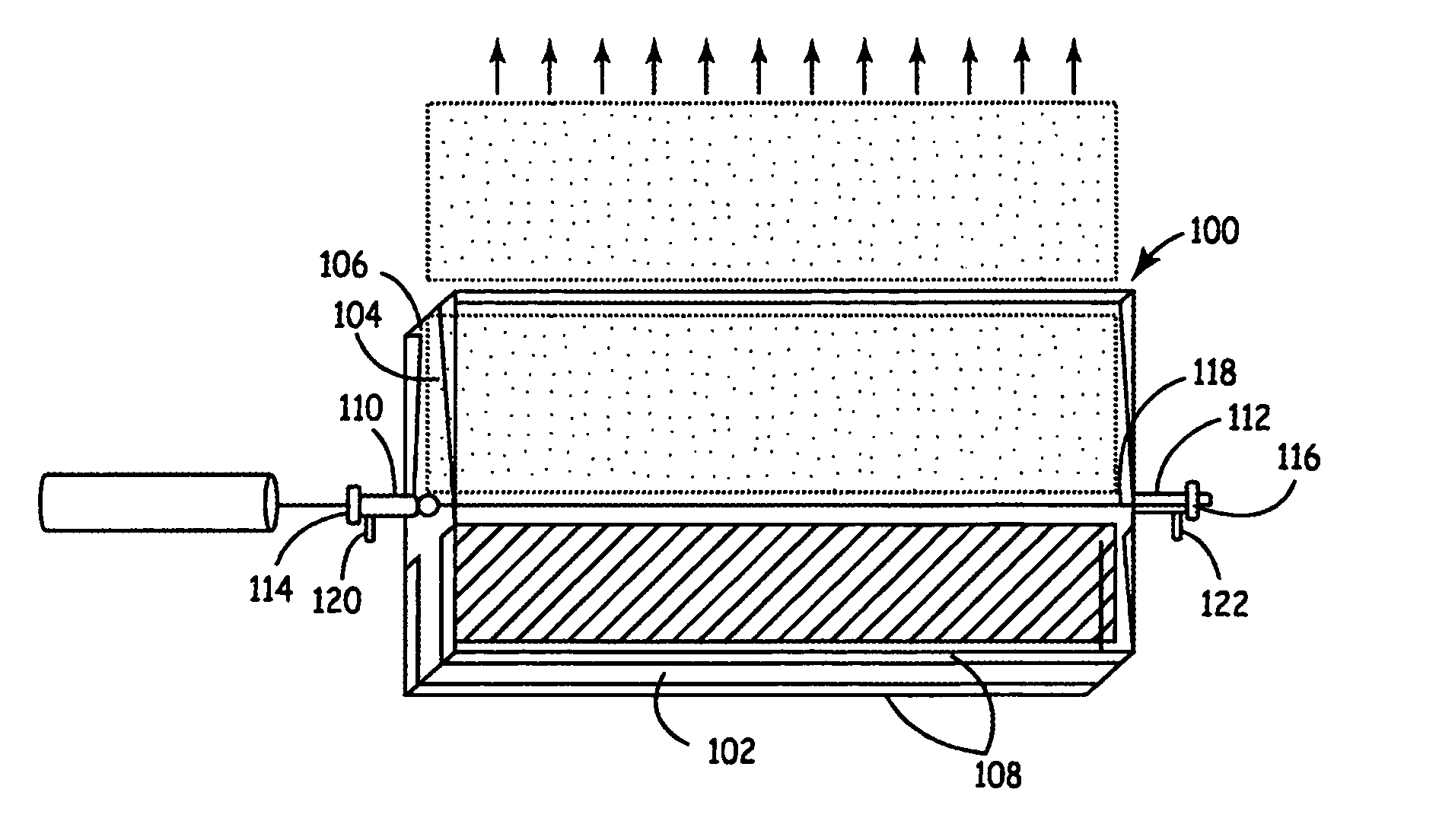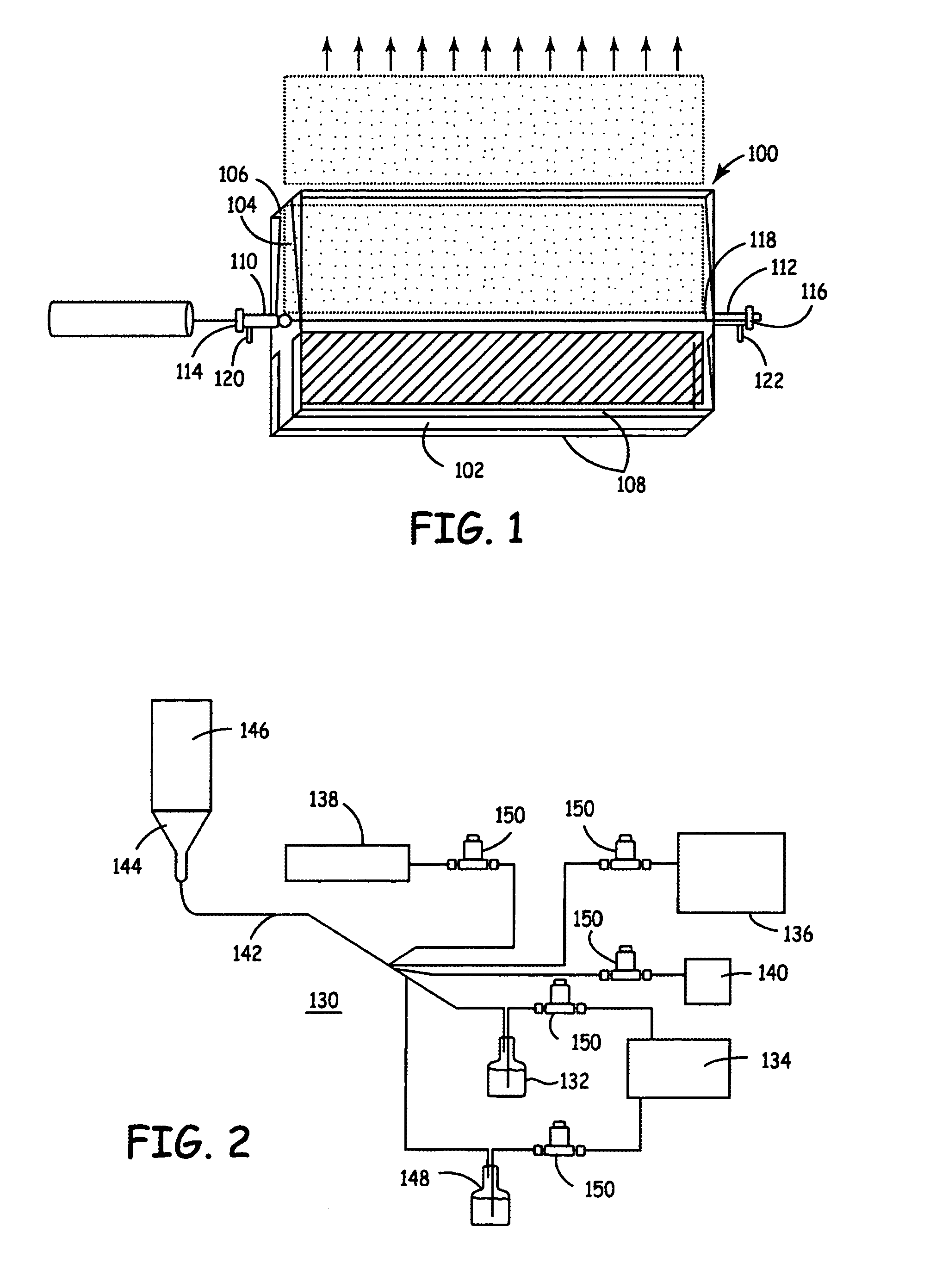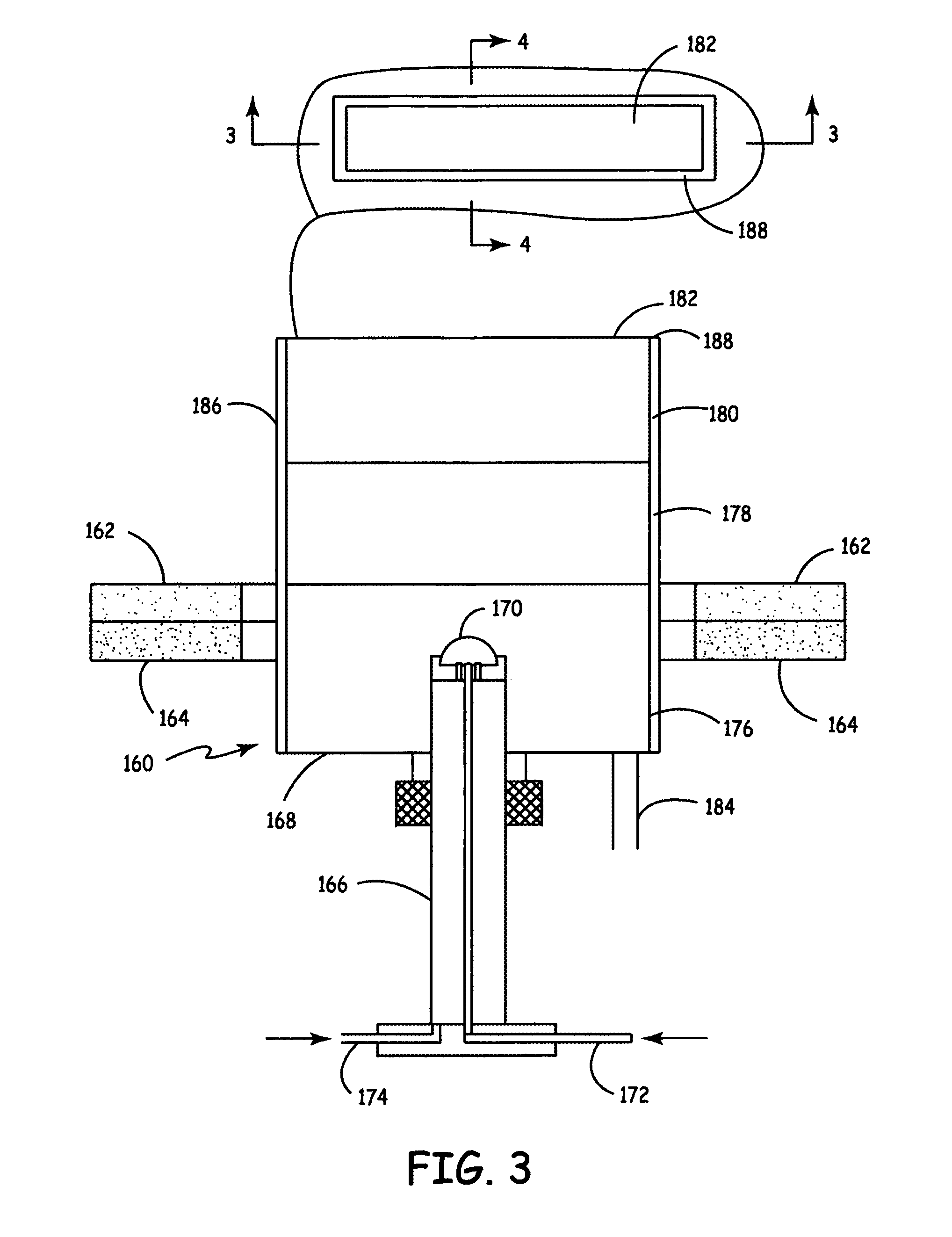Reactive deposition for electrochemical cell production
- Summary
- Abstract
- Description
- Claims
- Application Information
AI Technical Summary
Benefits of technology
Problems solved by technology
Method used
Image
Examples
example 1
Laser Pyrolysis Synthesis of Relevant Powders with Aerosol Precursors
[0263]This example demonstrates the synthesis of lithium nickel cobalt oxide by laser pyrolysis with an aerosol. Laser pyrolysis was carried out using a reaction chamber essentially as described above with respect to FIGS. 1, 3 and 4.
[0264]Lithium nitrate (Li(NO3)) (99%, 1.1 molar), (Ni(NO3)×6H2O) (technical grade, 0.7 molar), and (Co(NO3)×6H2O) (ACS grade, 0.2 molar) precursor was dissolved in deionized water. The aluminum nitrate precursor was obtained from Alfa Aesar, Inc., Ward Hill, Mass. The solution was stirred on a hot plate using a magnetic stirrer. The aqueous metal precursor solutions were carried into the reaction chamber as an aerosol. C2H4 gas was used as a laser absorbing gas, and nitrogen was used as an inert diluent gas. The reactant mixture containing the metal precursors, N2, O2 and C2H4 was introduced into the reactant nozzle for injection into the reaction chamber. Additional parameters of the ...
example 2
[0267]This example demonstrates the synthesis of aluminum doped lithium manganese oxides and LiAlO2 by laser pyrolysis with an aerosol. Laser pyrolysis was carried out using a reaction chamber essentially as described above with respect to FIGS. 1, 3 and 4.
[0268]Lithium nitrate (Li(NO3)) (99%, 2.3 molar or 2.6 M), (Mn(NO3) solution) (50 w / w, 2.3 molar or 1.9 M), and (Al(NO3)×9H2O) (99.999%, 2.3 molar or 0.1 M) precursor was dissolved in deionized water. The aluminum nitrate precursor was obtained from Alfa Aesar, Inc., Ward Hill, Mass. The solution was stirred on a hot plate using a magnetic stirrer. The aqueous metal precursor solutions were carried into the reaction chamber as an aerosol. C2H4 gas was used as a laser absorbing gas, and nitrogen was used as an inert diluent gas. The reactant mixture containing the metal precursors, N2, O2 and C2H4 was introduced into the reactant nozzle for injection into the reaction chamber. Additional parameters of the laser pyrolysis synthesis ...
PUM
| Property | Measurement | Unit |
|---|---|---|
| temperatures | aaaaa | aaaaa |
| temperatures | aaaaa | aaaaa |
| temperatures | aaaaa | aaaaa |
Abstract
Description
Claims
Application Information
 Login to View More
Login to View More - R&D
- Intellectual Property
- Life Sciences
- Materials
- Tech Scout
- Unparalleled Data Quality
- Higher Quality Content
- 60% Fewer Hallucinations
Browse by: Latest US Patents, China's latest patents, Technical Efficacy Thesaurus, Application Domain, Technology Topic, Popular Technical Reports.
© 2025 PatSnap. All rights reserved.Legal|Privacy policy|Modern Slavery Act Transparency Statement|Sitemap|About US| Contact US: help@patsnap.com



